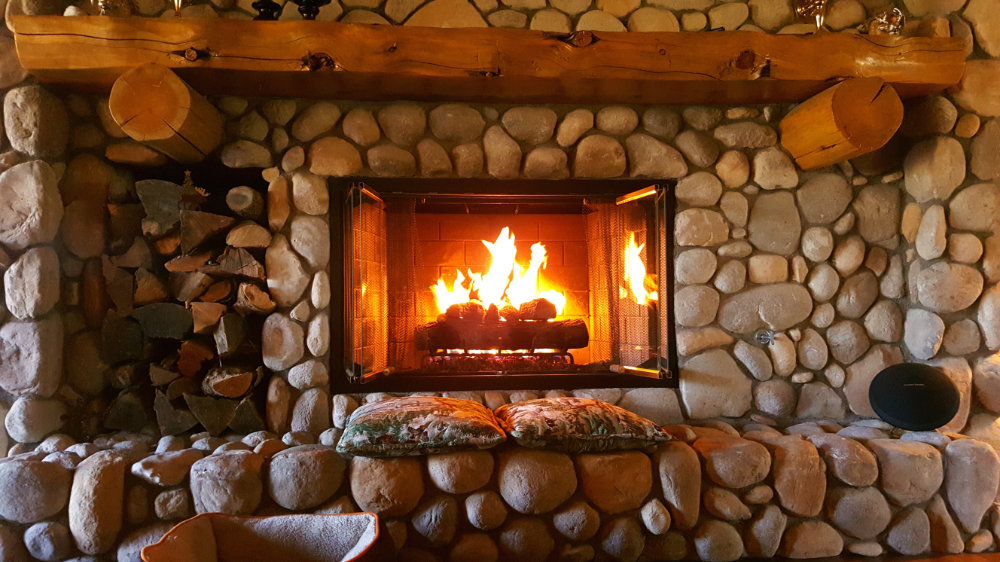Fireplace safety is important for preventing fires and injuries in the home. By following a few simple tips, you can enjoy your fireplace safely all season long.
What is fireplace safety?
Fireplace safety is the practice of taking precautions to prevent fires and injuries when using a fireplace. This includes using the fireplace properly, maintaining it regularly, and being aware of the potential hazards.
Fireplace safety tips
Here are some fireplace safety tips to follow:
- Have your fireplace and chimney inspected and cleaned once a year by a qualified professional. This will help to remove any creosote buildup, which can be a fire hazard.
- Only use dry, seasoned wood in your fireplace. Wet wood can produce more smoke and creosote, which can increase the risk of a chimney fire.
- Start your fire with kindling and paper, not flammable liquids. Never use gasoline, kerosene, or other flammable liquids to start your fire.
- Use a fireplace screen to prevent sparks and embers from escaping the fireplace.
- Never leave a fire unattended. Always extinguish your fire completely before leaving the house or going to bed.
- Keep flammable objects such as furniture, curtains, and rugs at least three feet away from the fireplace.
- Teach children about fireplace safety and supervise them closely when they are around the fireplace.
Fireplace maintenance tips
In addition to having your fireplace and chimney inspected and cleaned professionally once a year, you should also perform regular maintenance on your fireplace. This includes:
- Removing ashes from the fireplace after each use. Ashes can block airflow and increase the risk of a fire.
- Checking the fireplace screen for holes or tears before each use. Replace the screen if it is damaged.
- Cleaning the fireplace glass doors regularly. This will help to prevent soot buildup, which can obscure the view of the fire.
- Checking the fireplace damper to make sure it opens and closes properly. The damper helps to control airflow and prevent smoke from entering the home.
Common fireplace hazards
Here are some common fireplace hazards to be aware of:
- Creosote buildup: Creosote is a black, tar-like substance that can build up in the chimney over time. Creosote is highly flammable and can cause a chimney fire.
- Overheating: If your fireplace gets too hot, it can damage the chimney and surrounding walls. This can increase the risk of a fire.
- Sparks and embers: Sparks and embers can escape from the fireplace and ignite flammable materials.
- Carbon monoxide poisoning: Carbon monoxide is a colorless, odorless gas that can be produced by burning wood. Carbon monoxide poisoning can be fatal.
What to do in a fireplace fire
If you have a fireplace fire, follow these steps:
- Evacuate the home immediately.
- Call 911.
- If possible, try to extinguish the fire with a fire extinguisher. If you cannot extinguish the fire, do not attempt to fight it yourself.
- Wait for the fire department to arrive.
Additional fireplace safety tips
Here are some additional fireplace safety tips to keep in mind:
- Install carbon monoxide detectors in your home. Carbon monoxide detectors will alert you to the presence of carbon monoxide, giving you time to evacuate.
- Keep a fire extinguisher nearby. A fire extinguisher can be used to extinguish a small fireplace fire.
- Teach children about fireplace safety. Children should be supervised closely when they are around the fireplace.
- Be aware of the weather conditions. Do not use your fireplace if it is windy or rainy.
By following these fireplace safety tips, you can help to keep your family and home safe.
Here are some additional tips to help you enjoy your fireplace safely:
- Use a fireplace grate. A fireplace grate will help to elevate the wood from the bottom of the fireplace, which will allow for better airflow and combustion.
- Don’t overload the fireplace. Overloading the fireplace can cause it to overheat and increase the risk of a fire.
- Don’t burn trash or other materials in your fireplace. Burning trash or other materials can release harmful toxins into the air.
- Let the fire burn out completely before going to bed. This will help to prevent the fire from rekindling in the night.
Fireplace safety is important for everyone, but it is especially important for families with young children and pets. By following these tips, you can help to ensure that everyone enjoys your fireplace safely.

